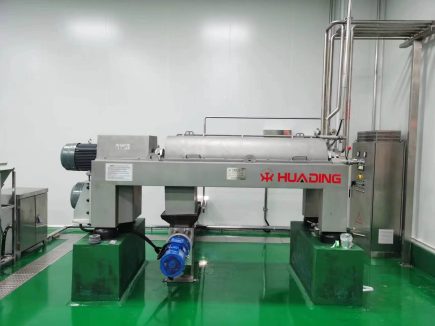Maintaining Your Decanter Centrifuge
Maintaining your decanter centrifuge is important to ensure its optimum performance, longevity, and safety. Regular maintenance and inspections help prevent breakdowns, reduce downtime, and extend the life of your equipment.
Here are some general tips for maintaining your decanter centrifuge:
Follow Manufacturer’s Recommendations: Always refer to the manufacturer’s Operation and Maintenance Manual for specific instructions on maintaining your decanter centrifuge.
Regular cleaning and inspection: Regularly clean the exterior and interior of the decanter centrifuge to prevent the buildup of debris, sludge, or other contaminants that could affect its performance.
Lubrication: Lubricate bearings, seals, and other moving parts according to the manufacturer’s recommendations. Proper lubrication helps reduce friction, wear, and heat to keep your decanter running smoothly.
Check and adjust belt tension: If your decanter is belt-driven, check and adjust the belt tension regularly to ensure proper power transmission and prevent excessive wear.
Monitoring Vibration and Temperature: Periodically monitor the vibration and temperature levels of the decanter centrifuge during operation. Significant changes in vibration or temperature may indicate potential problems with bearings, seals, or other components and should be addressed promptly to prevent further damage or failure.
Inspect and Clean Wear Protection: Decanters often have wear protection, such as replaceable tiles or liners, to protect the bowl and Spiral from wear.
Check Safety Devices: Decanter centrifuges are equipped with various safety devices such as guards, interlocks, and emergency stops.
Conclusion
A decanter centrifuge is a versatile and efficient piece of equipment widely used in Solid-liquid, solid-liquid-liquid, liquid-liquid, and solid-liquid-solid)separation processes in various industries. Whether used for dehydration, concentration, clarification, fractionation, or extraction, decanter centrifuges provide reliable and efficient separation solutions.






